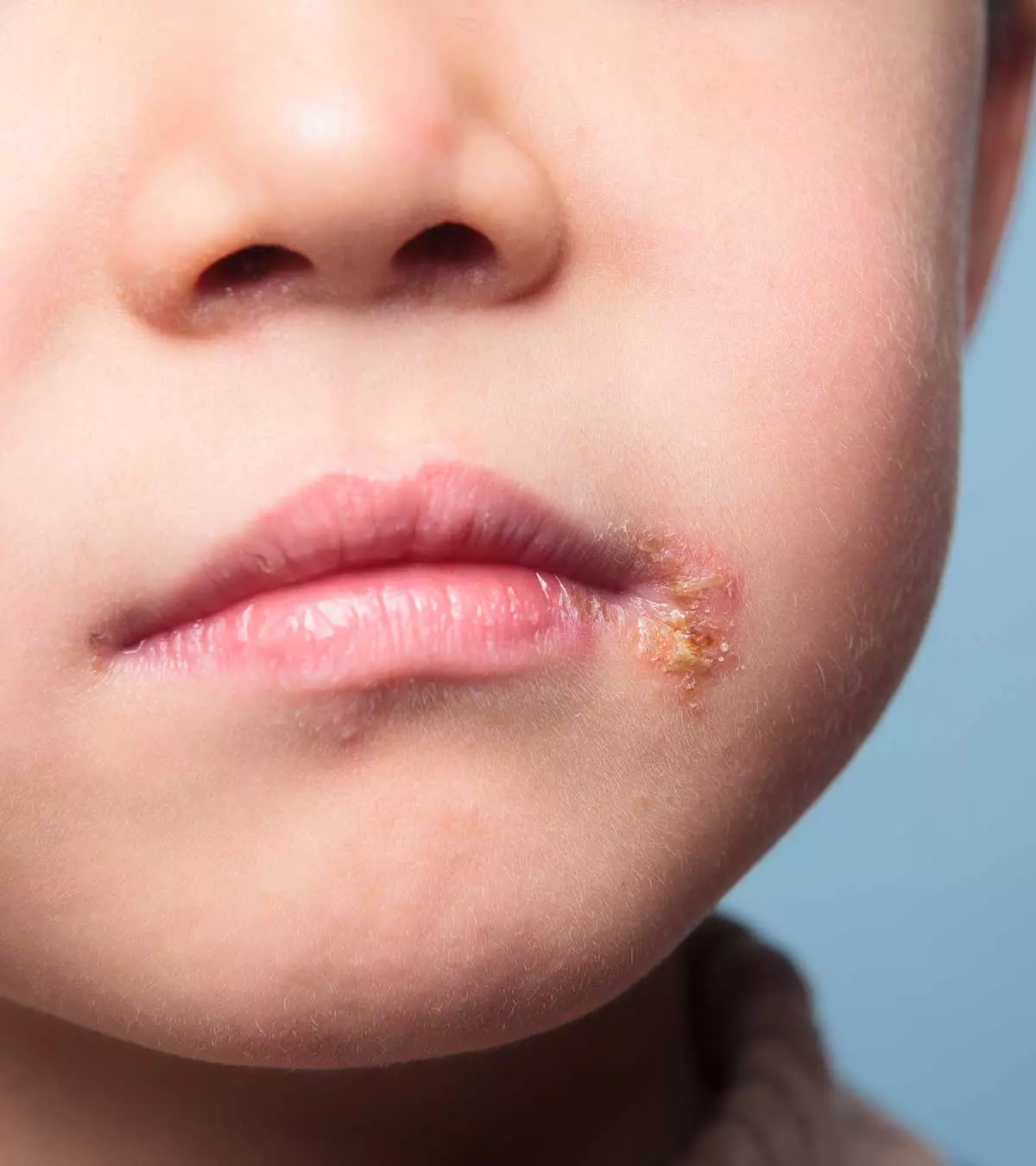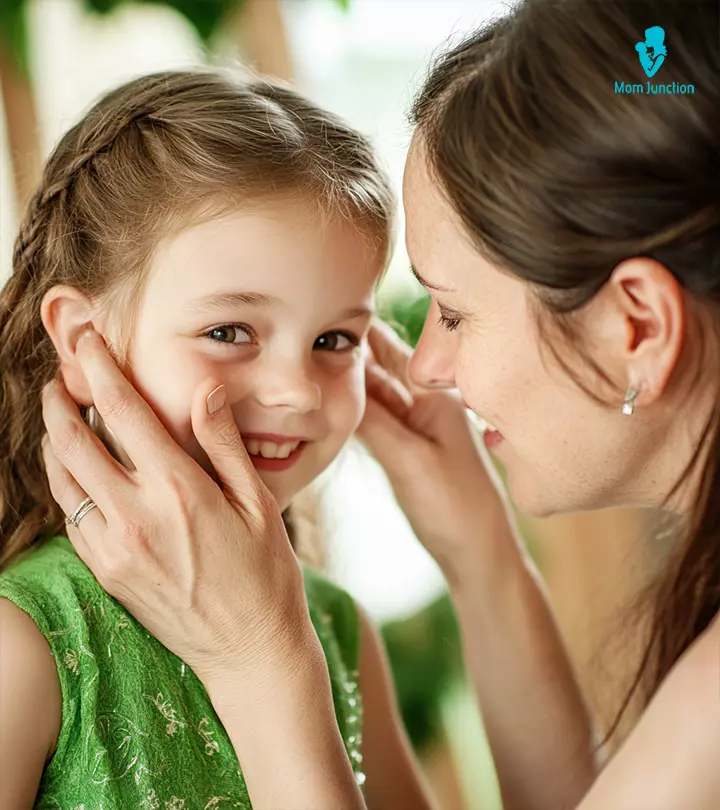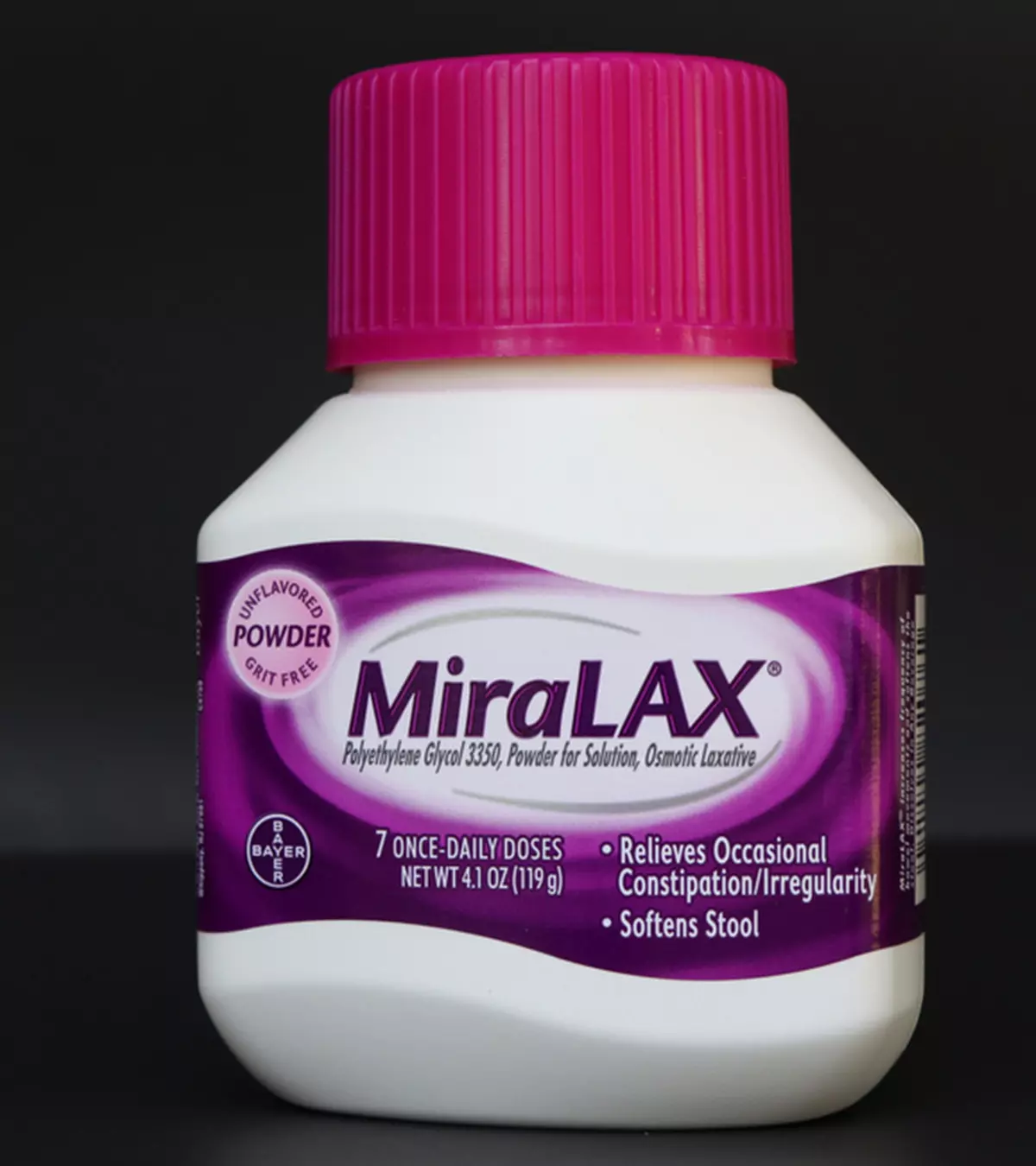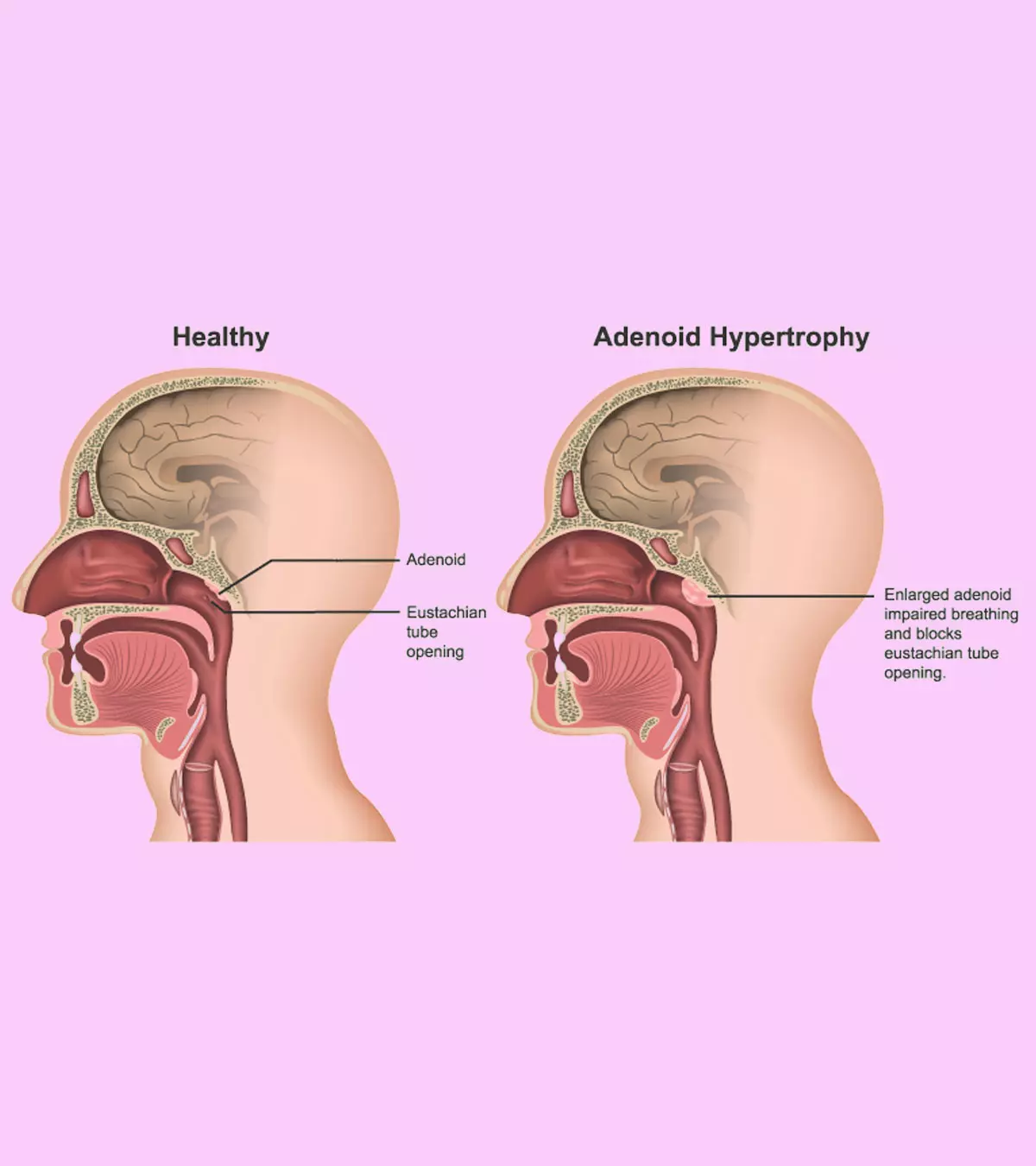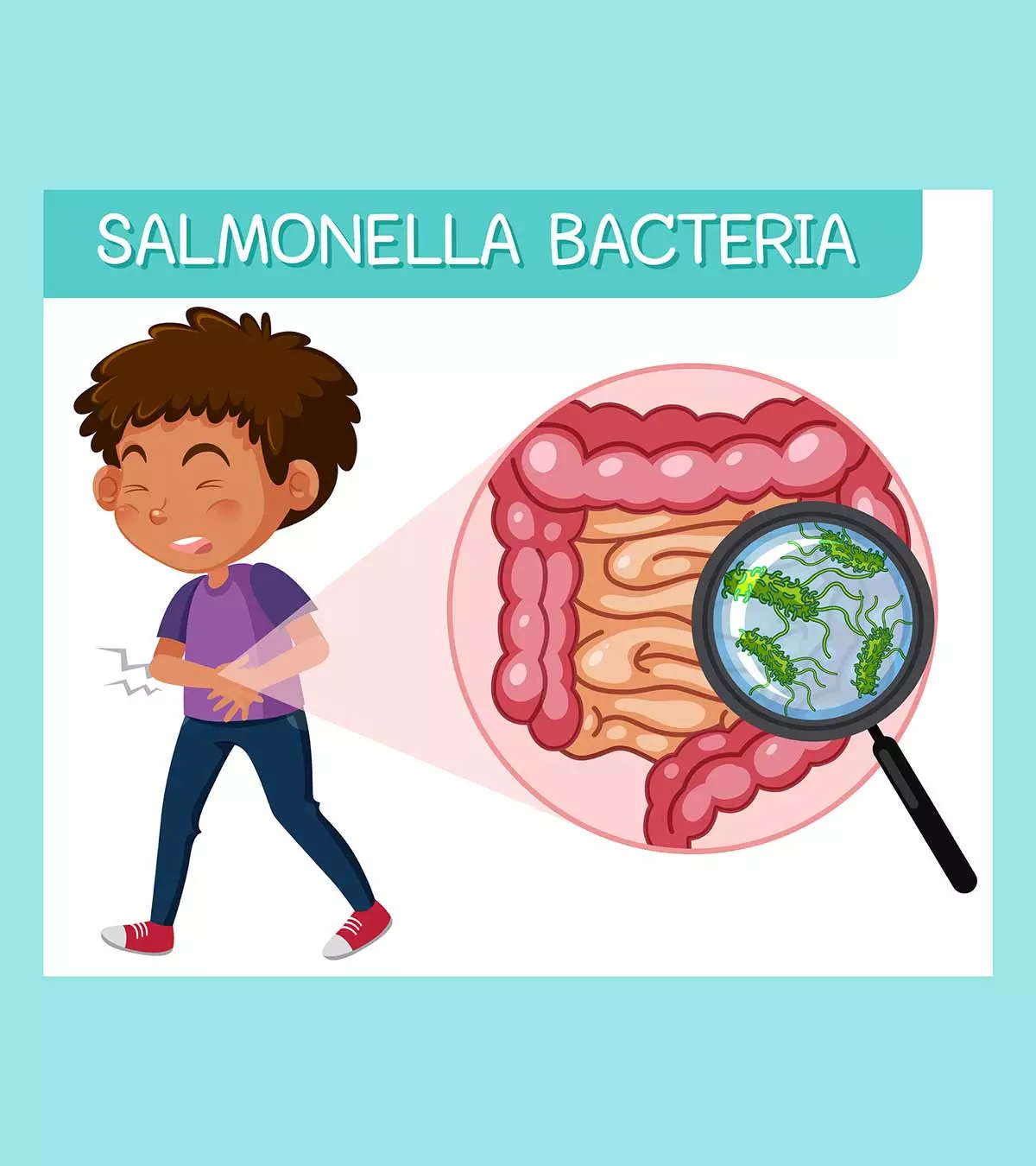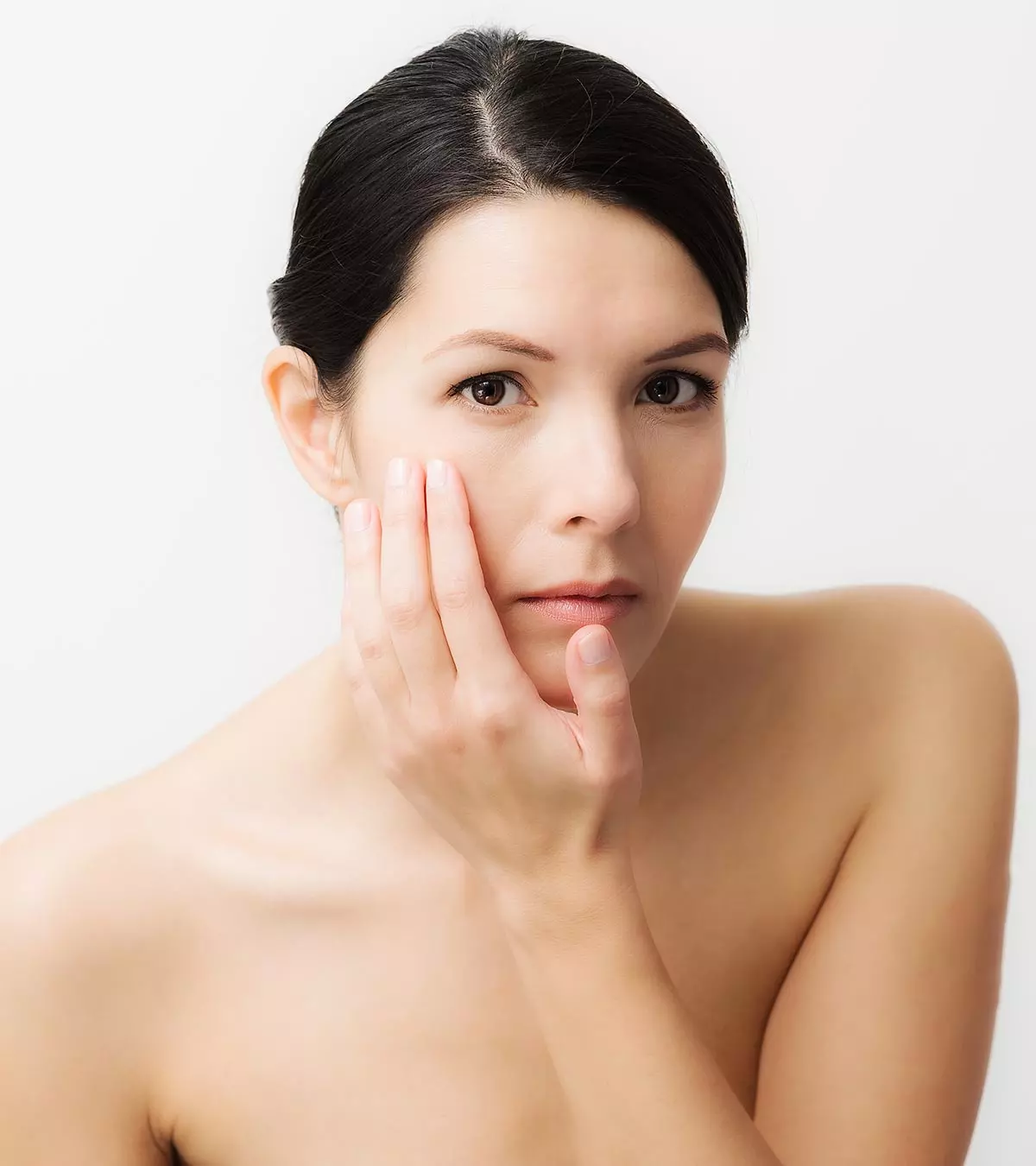
Dark circles in teenagers may not be due to serious health problems, but they can be cosmetically concerning. The condition often occurs due to the veins around the eyes getting larger and more prominent, often due to nasal issues. Other reasons for dark circles in teens include allergies, dehydration, lack of sleep, genetics, and thin skin (1). The condition is common among teens and can usually be avoided through preventive measures and home remedies such as avoiding allergens, staying hydrated, getting enough sleep, and using a cold compress. In rare instances, the teen may need treatments, such as laser therapy, based on the dark circles’ severity. If you want to further understand the causes, prevention, and treatment of dark circles in teenagers, continue reading our post.
Key Pointers
- The appearance of dark circles in teenagers is common.
- Dark circles may be caused by factors such as lack of sleep, stress, hormonal disturbances, and prolonged screen time.
- Getting sufficient sleep, following a proper routine, and using a cold compress can help eliminate dark circles.
- Topical medications, such as retinoic acid or vitamin C, can also help treat dark circles.
- Consultation with a dermatologist before using topical ointments or creams is essential.
Symptoms Of Dark Circles In Teens

Dark circles can appear as light to dark-colored, brownish-black pigmentation around the eyes. They are generally classified into (2):
- Pigmented: The area appears as a brown hue or tinge around the eyelid.
- Vascular: The area around the eyes appears as pink, purple, or blue hue with or without puffy eyes.
- Structural: The under-eye area appears darker due to shadows formed by the facial structures or contours.
Causes Of Dark Circles In Teens
Dark circles can occur in both boys and girls. There are several factors and conditions associated with the appearance of dark circles under the eyes (2) (3) (4) (5).
- Periorbital hyperpigmentation: Excess pigmentation under the eyes is often one of the main reasons for the presence of chronic or long-lasting dark circles. The condition is called periorbital hyperpigmentation. It can occur due to conditions such as dermal melanocytosis (a condition that causes blue-brown discoloration on the face) and post-inflammatory hyperpigmentation, which is due to allergic reactions or dermatitis. Dermatitis, also known as eczema, can cause itchy and dry skin in children. Excessive rubbing of the skin below the lower eyelid can cause this type of pigmentation.
- Thinness and translucence under-eye skin: Thin translucent skin under the lower eyelid can make the blood vessels more visible or prominent. This occurs due to low levels of fat under the skin, thus giving it a darker, bluish, or pinkish tinge. This condition can become more noticeable during menstruationiA natural monthly period characterized by abdominal cramps and vaginal bleeding in females.
- Genetics: Dark circles could run in families due to genetic predisposition to develop excess pigmentation under the lower eyelid. The condition might become more prominent as the child steps into the teen years. However, researchers have noted that pigmentation improves when the person is well-rested and has good health.
According to Dr. Cynthia L. E. Gellner, a pediatrician at Westridge Health Center, “If you have dark circles under your eyes, there is a good chance your kids will too. Some people genetically have thinner skin under their eyes. If your child has fair skin, they can also appear to have dark circles under their eyes, due to the veins being seen under the skin (1).” - Certain drugs: Some medicines, such as those for hormone replacement therapy, might cause the development of dark circles as a side effect.
- Sleep deprivation: Sleep deprivation or insomnia in children is one of the most common causes of dark circles in teens. The lack of sleep may cause the skin under the eyes to appear pale, showcasing the blood vessels through it (13). Studies also indicate symptoms of swelling, redness, wrinkles, and skin darkening around the eyes in people fatigued from lack of sleep(14).
- Environmental and lifestyle factors: The causes of dark circles extend beyond medical and physiological reasons. Certain environmental, physiological, and lifestyle-related factors and aging might cause or worsen existing dark circles. Some other common factors associated with dark circles are:
- Increased melanin production from excessive exposure to the sun (13)
- Ultraviolet radiation
- Fluid retention from eating excessively salty foods (15)
- Anemia (caused due to nutritional deficiencies or iron deficiency)
- Excessive scratchiness and eye dryness from smoking (16)
- Alcohol consumption
- Hormonal disturbances
- Stress
- Dehydration
- Disorders of the thyroid, liver, or kidney
- Excessive screen time and gadget use
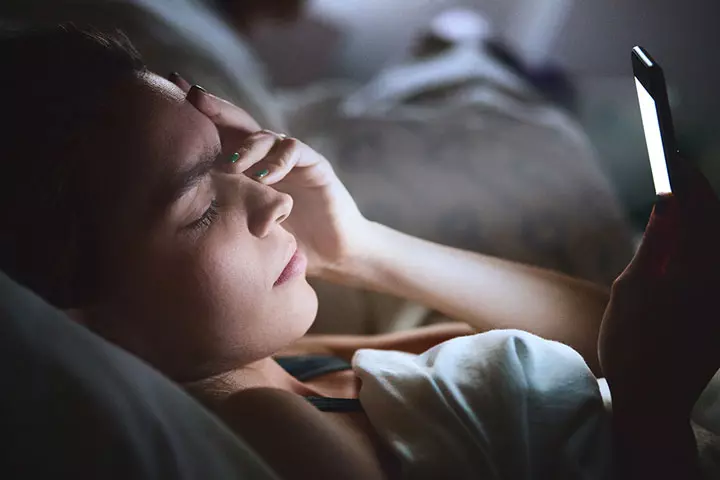
 Quick fact
Quick factRisk Factors Of Dark Circles In Teens
A few factors can make a teen more susceptible to dark circles (4) (5).
- Ethnicity: It has been observed that individuals belonging to ethnic groups with a darker skin tone could be more prone to dark circles than those from groups with lighter skin.
- Genetics: Dark circles under a child’s eyes could be hereditary. A teen might have dark circles if other family members have it too.
- Age: Several changes occur in the skin during teenage. The phase might make the child more susceptible than when they were a young child.
How To Remove Dark Circles Naturally?
Home remedies for dark circles are mostly anecdotal and may not have scientific backing. Therefore, it is advisable to do a patch test before trying them under the dark circles if your child has sensitive skin or any existing skin problems.
You may try the following simple at-home remedies to manage dark circles in teenagers.
- Use a cold compress: Applying a cold compress can help constrict the dilated blood vessels, thus reducing the puffiness and alleviating dark circles.
- Get adequate sleep: Make sure your child gets quality and adequate sleep. This will help relieve stress and manage dark circles (6). Encourage your teen to avoid screen time for at least one hour before bed, as blue light can disrupt sleep quality.
- Apply cold tea bags: Placing cold (refrigerated) and soaked tea bags under the eyes can help reduce dark circles. The caffeine content of the tea could constrict the blood vessels while also stimulating blood circulation. Its antioxidantiA natural substance that prevents or delays cell damage by neutralizing free radicals properties can also be useful in managing the dark circles. You may boil herbal, green, or black tea bags and then refrigerate them for use (7).
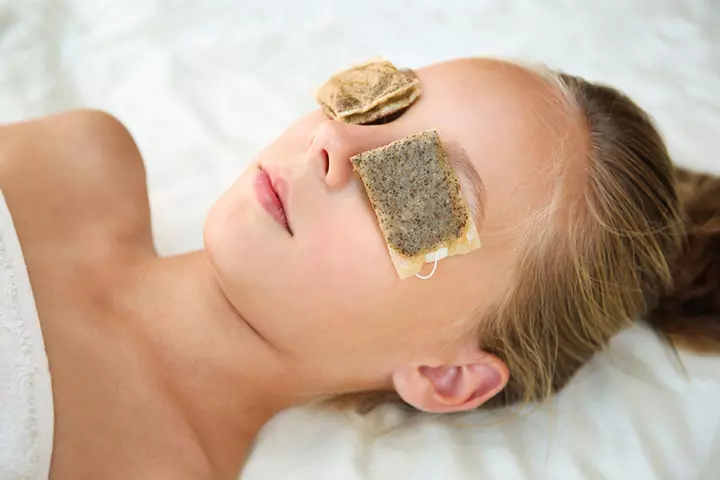
- Keep your head elevated: During sleep, you may encourage your child to use a comfortable pillow to keep the head elevated. This may help reduce dark circles and puffiness under the eyes.
- Use sunscreen: Using a broad-spectrum sunscreen along with UV coated sunglasses can help manage pigmentation under the eyes (2). Pick sunscreens that are safe for application under the eye.
Eqra Rana, a blogger, shares natural remedies she tried to remove dark circles. Sharing her experience, she says, “I began applying Aloe Vera every day on my eyes. It makes your eyes fresh and also removes all kinds of puffiness. For this, pluck a tiny piece of Aloe Vera from the plant, wash it in water, peel it, and apply it to your eyes.
“The second remedy is a magical remedy… You just need three ingredients: Aloe Vera, coconut oil, and vitamin E capsule. Firstly, in a small, empty, clean bottle, add two tablespoons of coconut oil, fresh Aloe Vera, and one vitamin E capsule of oil, mix them, and place them in your fridge. Apply this remedy every day before bed (i).”
 Quick tip
Quick tipThe use of cosmetic concealers and under-eye massage might help reduce the intensity of darkness. However, use caution since concealers can contain chemicals and massaging close to the eye can be risky.
Medical Treatment For Dark Circles In Teens
Dark circles in teens seldom require any treatment. Your child’s doctor might recommend home management tips and suggest waiting for the child to grow older. Dealing with the underlying cause, like inadequate sleep and UV exposure could help cure dark circles.
Treatment might usually be required only in cases where dark circles cause body image issues in teens. In such cases, a dermatologist might suggest the following treatment methods (2).
- Topical depigmentation agents (such as eye creams) can be used to reduce dark circles. These can include
- HydroquinoneiAn agent used to lighten darkened areas of the skin. in combination with tretinoiniMedication used to treat acne and other skin conditions such as wrinkles and discoloration.
- Kojic acid (naturally derived from naturally occurring Aspergillus fungi species)
- Azelaic acidiA compound used to treat acne, skin inflammation, and redness.
- Topical retinoic acidiA derivative of vitamin A required in small amounts to help cells grow and develop.
- Topical vitamin C
- Arbutin (extract of leaves of the bearberry shrub and the cranberry, pear, or blueberry plants)
- Chemical peels and laser therapy do exist as treatment options. However, you should discuss these techniques with a skincare expert or dermatologist to work out the safer options for your child’s age group.

 Experts say
Experts sayIt is advised never to self-medicate or use over-the-counter skin products without consultation with a doctor.
Prevention Of Dark Circles In Teens
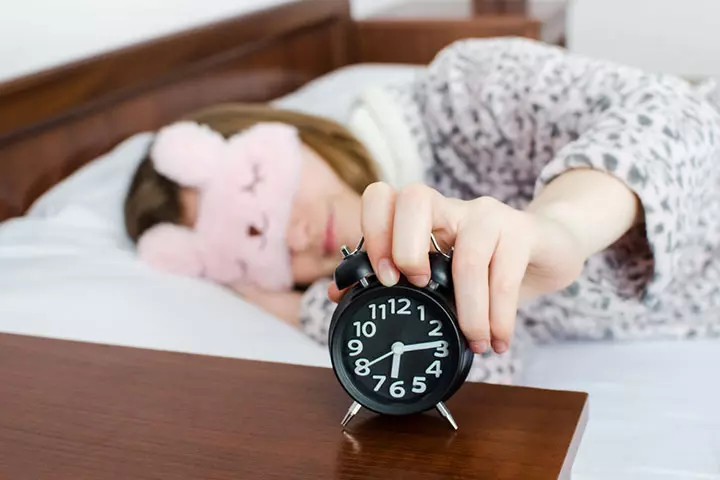
Some causes of dark circles in teenagers can be prevented by observing certain precautions and lifestyle changes (13).
- Have adequate sleep.
- Have a balanced diet rich in fresh fruits with antioxidants to prevent nutritional deficiencies such as vitamin deficiency.
- Use appropriate sunscreens and wear sunglasses to protect from pigmentation and sun damage (UV rays).
- Discuss with your teen about ways to manage stress, which could cause fatigue and sleeplessness.
 Quick tip
Quick tipDark circles are a common condition, and their impact is limited to cosmetic problems. Good sleep and other precautions can significantly help control the presence of dark circles. Speak to your teen and let them know that excess pigmentation around the eyes is nothing to be worried and conscious about. You can also consult a doctor to know about the ways to manage the issue.
When To See A Doctor?
It’s important to seek medical advice if you notice persistent dark circles or any other concerning symptoms in your teen. Consult a doctor if (8):
- You suspect the dark circles might be bruises
- Your teen has signs of dehydration
- Your teen’s sleep is affected
- Dark circles are accompanied by swelling, vision changes, or pain
A healthcare professional can assess whether the dark circles indicate an underlying health issue and recommend appropriate treatment.
Frequently Asked Questions
1. Is it normal for teens to have dark circles?
Dark circles are common amongst teens of ages 16 to 25. The contributing factors are improper sleeping habits, frequent use of cosmetics, rubbing the eyes, lack of correction of myopia, stress, family history, and atopy (3).
2. Does vitamin E reduce dark circles in teens?
A 2004 study on topical application of a gel containing vitamin E, phytonadioneiSynthetic form of vitamin K used to treat certain bleeding disorders. , retinol, and vitamin C showed a moderate reduction in dark circles (9). However, it is difficult to determine if vitamin E effectively treats dark circles since it is combined with other ingredients.
3. What foods help reduce dark circles in teens?
Dark circles caused by genetics or allergies do not disappear completely. However, some foods and dietary changes can help–foods with antioxidant pigments (blueberries, legumes, bilberries, parsley, cranberries, and green or black tea), juicy fruits, and vegetables (9).
4. Can hormones cause dark circles?
Hormonal changes can cause alterations in the skin that can lead to dark circles under the eyes. Cortisol is a hormone that increases during stress and lack of sleep and can lead to increased deposits of melanin resulting in dark circles (10).
5. Does depression cause dark eye circles?
Dark circles under the eyes can be caused by a variety of factors, including lack of sleep, allergies, eczema, and genetics. Depression is not a direct cause of dark circles under the eyes, but it can be associated with changes in sleep patterns, which can lead to dark circles (9).
Dark circles in teenagers are a typical occurrence caused primarily by stress, exhaustion, and a lack of sleep. Certain medicines, thin translucent skin beneath the lower eyelid, genetic makeup, and various other factors could also play a role. Getting enough sleep and taking other precautions can dramatically reduce the appearance of dark circles. Also, make sure your teen understands that extra pigmentation around the eyes is nothing to be concerned about. You can also seek medical advice on how to deal with dark circles.
Infographic: What Can You Do To Treat Dark Circles At Home?
Under-eye dark circles can be cured in most teens with simple home remedies. If it persists, seek medical advice to find the underlying cause since treatment may improve the condition. Go through the infographic to learn home remedies for under-eye dark circles in teens. Illustration: Momjunction Design Team
Illustration: How To Get Rid Of Undereye Dark Circles In Teenagers?

Image: Dalle E/MomJunction Design Team
Dark circles under your eyes are not always the result of a lack of sleep. Watch this informative video on the causes of dark circles and the precautionary measures you can take to prevent them from forming.
Personal Experience: Source
MomJunction articles include first-hand experiences to provide you with better insights through real-life narratives. Here are the sources of personal accounts referenced in this article.
i. Is it impossible to remove Dark circles?;https://medium.com/@eqrarajput862/is-it-impossible-to-remove-dark-circles-7270145e1849
References
- What Are Those Dark Circles Under My Child’s Eyes?; University of Utah Health
https://healthcare.utah.edu/the-scope/kids-zone/all/2021/02/what-are-those-dark-circles-under-my-childs-eyes - Sarkar R. et al. Periorbital Hyperpigmentation: A Comprehensive Review; The Journal of Clinical and Aesthetic Dermatology
https://www.ncbi.nlm.nih.gov/pmc/articles/PMC4756872/ - Sheth P. B. Shah H. A. and Dave J. N. Periorbital hyperpigmentation: a study of its prevalence common causative factors and its association with personal habits and other disorders; Indian Journal of Dermatology
https://www.ncbi.nlm.nih.gov/pubmed/24700933/ - Roh M. R. and Chung K. Y. Infraorbital dark circles: definition causes and treatment options: Dermatologic Surgery
https://onlinelibrary.wiley.com/doi/pdf/10.1111/j.1524-4725.2009.01213.x - Roberts W. E. Periorbital hyperpigmentation: review of etiology medical evaluation and aesthetic treatment: Journal of Drugs in Dermatology
https://jddonline.com/articles/dermatology/S1545961614P0472X/1 - Sundelin T. et al. Cues of fatigue: effects of sleep deprivation on facial appearance: Sleep
https://academic.oup.com/sleep/article/36/9/1355/2453883 - Ahmadraji F. and Shatalebi M. A. Evaluation of the clinical efficacy and safety of an eye counter pad containing caffeine and vitamin K in emulsified Emu oil base. Advanced Biomedical Research
https://www.ncbi.nlm.nih.gov/pmc/articles/PMC4300604/ - Dark circles under the eyes
https://www.aboutkidshealth.ca/dark-circles-under-the-eyes?language=en&hub=dermatology - Mitsuishi T. et al. The effects of topical application of phytonadione retinol and vitamins C and E on infraorbital dark circles and wrinkles of the lower eyelids. National Library of Medicine
https://pubmed.ncbi.nlm.nih.gov/17147559/ - Dark circles under your eyes: When did those show up?. Providence
https://www.providence.org/news/uf/649887673 - Dark circles under the eyes
https://www.aboutkidshealth.ca/Article?contentid=803&language=English&hub=dermatology - How do I get rid of dark circles under my eyes?
https://health.mountsinai.org/blog/how-do-i-get-rid-of-dark-circles-under-my-eyes/ - Dark Circles Under Eyes.
https://my.clevelandclinic.org/health/symptoms/23128-dark-circles-under-eyes - Tina Sundelin et al.; Cues of Fatigue: Effects of Sleep Deprivation on Facial Appearance.
https://pmc.ncbi.nlm.nih.gov/articles/PMC3738045/#:~:text=Sleep%20deprivation%20in%20both%20men,being%20perceived%20as%20more%20sad. - How to Get Rid of Bags Under the Eyes.
https://www.aao.org/eye-health/tips-prevention/bags-under-eyes - How Do Smoking and Vaping Damage the Eyes?
https://www.aao.org/eye-health/tips-prevention/smokers
Community Experiences
Join the conversation and become a part of our nurturing community! Share your stories, experiences, and insights to connect with fellow parents.
Read full bio of Dr. Shashidhar A
Read full bio of Dr Bisny T. Joseph
Read full bio of Swati Patwal
Read full bio of Anindita Ghatak










